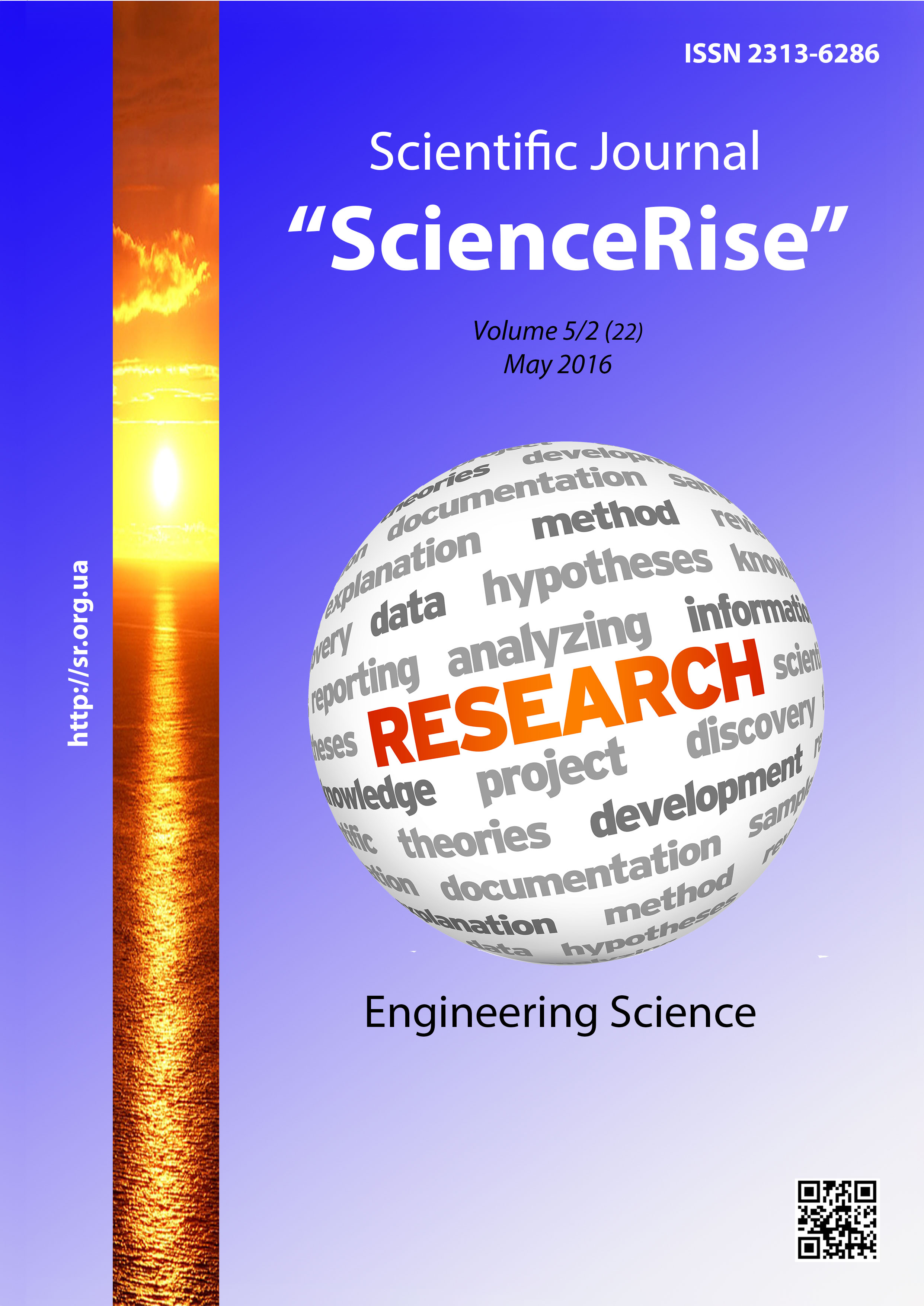Видалення сінтетичних барвників зі стічних вод
DOI:
https://doi.org/10.15587/2313-8416.2016.69476Ключевые слова:
барвник, флотоекстракція, поверхнево-активні речовини, стічні води, бенгальський рожевий, гексатриметиламоній бромідАннотация
Проаналізовано сучасний стан проблеми забруднення стічних вод барвниками, розглянуто існуючі методи вилучення і деструкції барвників. В якості альтернативної запропонована технологія флотоекстракції. Досліджено закономірності видалення барвника бенгальського рожевого з модельних розчинів за допомогою метода флотоекстракції. На основі проведених експериментів встановлено вплив рН середовища, тривалості процесу, мольного співвідношення реагуючих речовин та визначені раціональні умови проведення флотоекстракції
Библиографические ссылки
Nesterova, L. A., Saribekov, G. S. (2010). Efficiency of use of turnaround systems of water consumption at the textile enterprises. Eastern-European Journal of Enterprise Technologies, 4/8 (46), 25–28. Available at: http://journals.uran.ua/eejet/article/view/3022
Forgacs, E., Cserháti, T., Oros, G. (2004). Removal of synthetic dyes from wastewaters: a review. Environment International, 30 (7), 953–971. doi: 10.1016/j.envint.2004.02.001
Golman, А. М. (1982). Ionnaya flotatciya. Moscow: Nedra, 144.
Lu, Y., Zhu, X. (2001). Solvent sublation: theory and application. Separation & Purification Reviews, 30 (2), 157–189. doi: 10.1081/spm-100108158
Bi, P., Dong, H., Dong, J. (2010). The recent progress of solvent sublation. Journal of Chromatography A, 1217 (16), 2716–2725. doi: 10.1016/j.chroma.2009.11.020
Caragay, A. B., Karger, B. L. (1966). Use of Rate Phenomena in Solvent Sublation. Separation of Methyl Orange and Rhodamine B. Analytical Chemistry, 38 (4), 652–654. doi: 10.1021/ac60236a040
Horng, J. Y., Huang, S. D. (1993). Removal of organic dye (direct blue) from synthetic wastewater by adsorptive bubble separation techniques. Environmental Science & Technology, 27 (6), 1169–1175. doi: 10.1021/es00043a017
Lu, Y., Wang, Y., Zhu, X. (2001). The removal of bromophenol blue from water by solvent sublation. Separation Science and Technology, 36 (16), 3763–3776. doi: 10.1081/ss-100108361
Lu, Y., Zhu, X., Peng, Y. (2003). The Removal of Methyl Violet from Water by Solvent Sublation. Separation Science and Technology, 38 (6), 1385–1398. doi: 10.1081/ss-120018815
Lu, Y., Wei, B., Wang, Y., Li, J. (2007). Studies on the Removal of Bromocresol Green from Water by Solvent Sublation. Separation Science and Technology, 42 (8), 1901–1911. doi: 10.1080/01496390601174398
Lu, Y., Wang, Y., Xiong, Y., Zhu, X. (2001). The kinetics and thermodynamics of surfactants in solvent sublation. Fresenius’ Journal of Analytical Chemistry, 370 (8), 1071–1076. doi: 10.1007/s002160100914
Obushenko, T. I., Astrelin, I. M., Tolstopalova, N. M., Varbanets, M. A., Kondratenko, T. A. (2008). Wastewater Treatment from Toxic Metals by Flotoextraction. Journal of Water Chemistry and Technology, 30 (4), 241–245.
Bi, P. Y., Dong, H. R., Wang, N. N. (2007). Critical bubble radius in solvent sublation. Chinese Chemical Letters, 18 (10), 1293–1296. doi: 10.1016/j.cclet.2007.08.009
Astrelin, I. M., Obushenko, T. I., Tolstopalova, N. M., Тargonska, О. О. (2013). Theoretical principles and application of solvent sublation: a review. Voda i vodoochysni tehnologii', 3, 3–23.
Загрузки
Опубликован
Выпуск
Раздел
Лицензия
Copyright (c) 2016 Тетяна Іванівна Обушенко, Наталія Михайлівна Толстопалова, Ігор Михайлович Астрелін

Это произведение доступно по лицензии Creative Commons «Attribution» («Атрибуция») 4.0 Всемирная.
Наше издание использует положения об авторских правах Creative Commons CC BY для журналов открытого доступа.
Авторы, которые публикуются в этом журнале, соглашаются со следующими условиями:
1. Авторы оставляют за собой право на авторство своей работы и передают журналу право первой публикации этой работы на условиях лицензии Creative Commons CC BY, которая позволяет другим лицам свободно распространять опубликованную работу с обязательной ссылкой на авторов оригинальной работы и первую публикацию работы в этом журнале.
2. Авторы имеют право заключать самостоятельные дополнительные соглашения, которые касаются неэксклюзивного распространения работы в том виде, в котором она была опубликована этим журналом (например, размещать работу в электронном хранилище учреждения или публиковать в составе монографии), при условии сохранения ссылки на первую публикацию работы в этом журнале .

